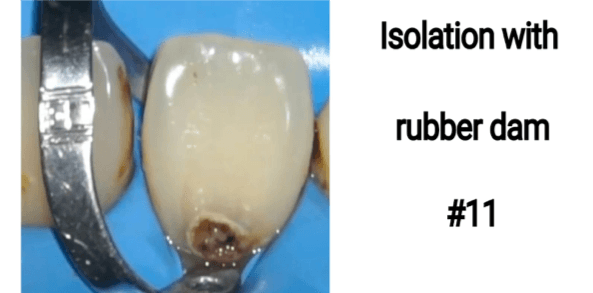-Dr. Kirti Jain, is the winner of the special mention – popular award for DR Pronto Esthetic Challenge 1, 2021-2022
Introduction
Cavities, as we all know, are permanently damaged areas in the hard surface of your teeth that develop into tiny openings or holes. Cavities, also called tooth decay or caries, are caused by a combination of factors, including oral bacteria, frequent snacking, sipping sugary drinks and not cleaning teeth well.
Cavities and tooth decay are among the world's most common health problems. They're especially common in children, teenagers and older adults. Basically, anyone who has teeth can get cavities, including infants.
If cavities aren't treated, they get larger and affect deeper layers of teeth i.e. dentin and pulp. This can lead to a severe toothache, infection and tooth loss. Regular dental visits and good brushing and flossing habits are the best protection against cavities and tooth decay.
Case report
A 21-year-old female patient presented to the dental clinic, with a chief complaint of carious maxillary central incisor. Thorough intraoral examination revealed Black’s Class V caries w.r.t 11. One-visit technique was planned.
Restorative approach
Rubber dam was placed isolating #11.

Cavity preparation was done using diamond bur SI-47.

The tooth was etched with 35% orthophosphoric acid followed by the application of a single-step adhesive according to the manufacturer instructions.

Bonding agent was light cured for 20sec from the buccal direction plus 20sec from the lingual direction using a high-power curing light (O-led woodpecker bluelight).

Incremental layers of composite (Active Pronto, A2 shade) was applied and cured for 20 seconds.

Once curing was completed, the margins were finished and polished. Needle point diamond bur was used to smooth the extra composite,followed by composite finishing kit (Shofu super fine snap mini).

Proximal finishing strip was used to trim the interproximal areas.

Oral hygiene instructions for the interproximal spaces were reviewed and the patient was rescheduled for a regular 6-month follow-up.
Conclusions
Restoration of carious anterior teeth is a complex and time consuming procedure. Excellent esthetic and functional results can be achieved with patience, skills and the right materials. This advancement can be regarded as a sound investment in modern dentistry, helping a significant number of patients to receive esthetic restorations that are more conservative and affordable.




















Comments